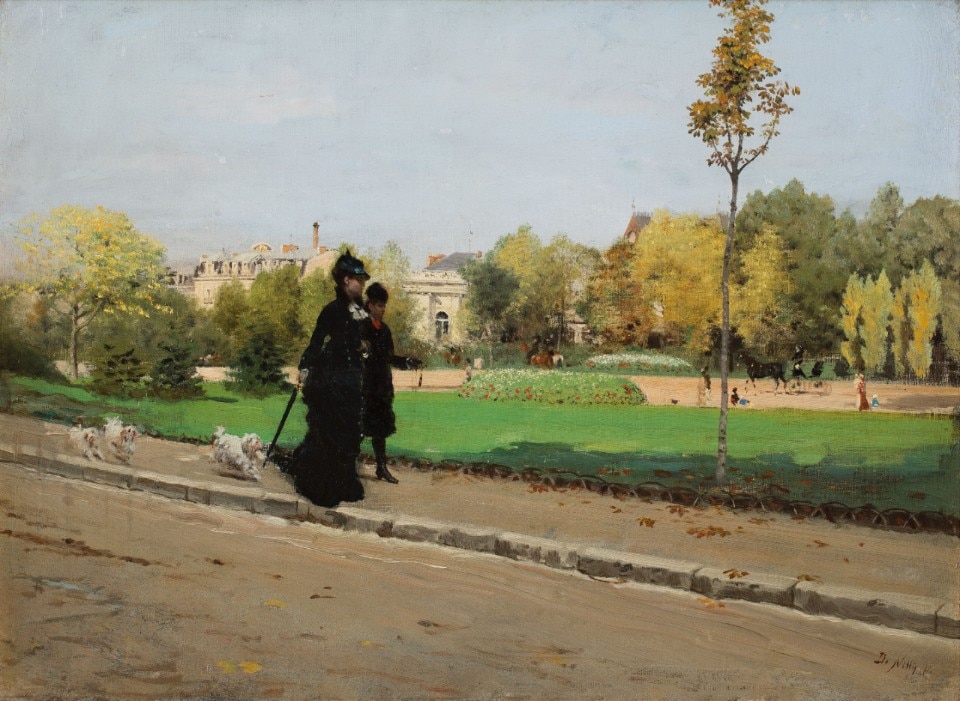A comprehensive immersion into the beautiful Parisian Belle Époque, a story, a moment, a well-structured tour: Boldini, De Nittis et les Italiens de Paris.
At the Castle of Novara, on November 4th, beauty took the stage. A delicate, fascinating, cultured exhibition that experiments and then reveals.
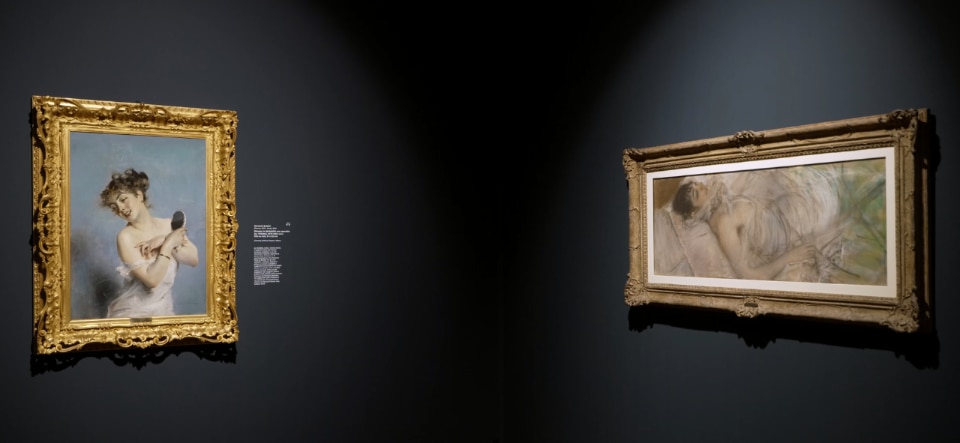
Articulated in eight rooms, the exhibition tells the story of painters and society of the 19th century, ‘a worldly society, simultaneously frivolous and aestheticizing, sensitive to the fashions of La Belle Époque, insensitive to those who do not touch it directly. It hides nothing of the vanities, lies, errors, cunning, perversities, generosity, secret ills of its characters, of whom we believe today to know the models. It scourges hearts and souls with cold delicacy, brings the same objective respect for ridicule and pathos, allows itself, like the child who hides to be seen, concealing itself behind the novel,’ as Maurice Denuzière writes.
There are continuous comparisons and parallels between the style, themes, portraits, and views of a group of Italian painters who fled to Paris to pursue an artistic dream.
In the first room, masters such as Alberto Pasini, Domenico Morelli, and Paolo Michetti serve as intros, with a series of magnificent works interrupted by a prominent name: Telemaco Signorini with his Procession in Florence, a fundamental artist for Boldini’s artistic growth.
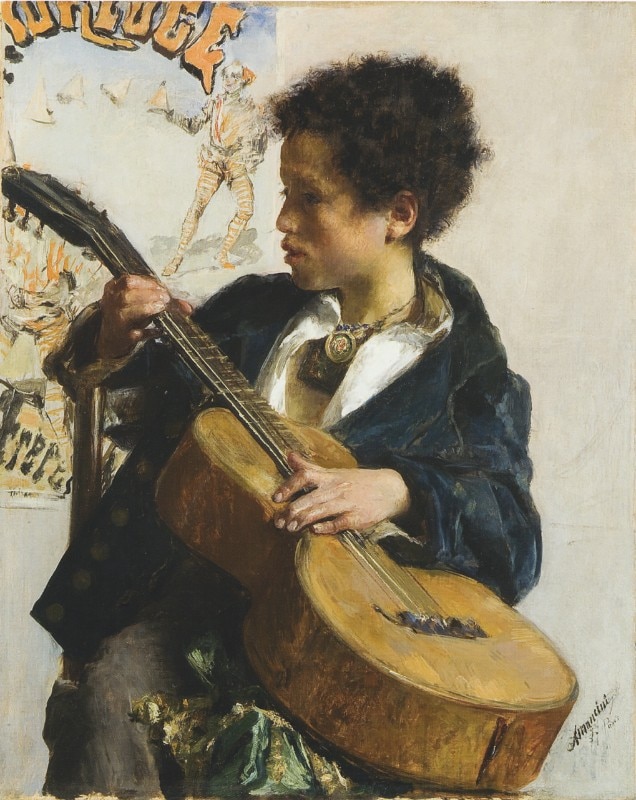
‘The portraits have been done up to now with a single rule, that is, they had to have a background as unified as possible to make the subject stand out and not disturb the head of the person portrayed; a ridiculous precept, and this is said by Boldini himself with his portraits that have as a background what the studio presents, paintings, prints, and other objects attached to the wall, without the head of the person portrayed suffering in the least for it’. This was written in a review in 1867 by Mr. Signorini himself.
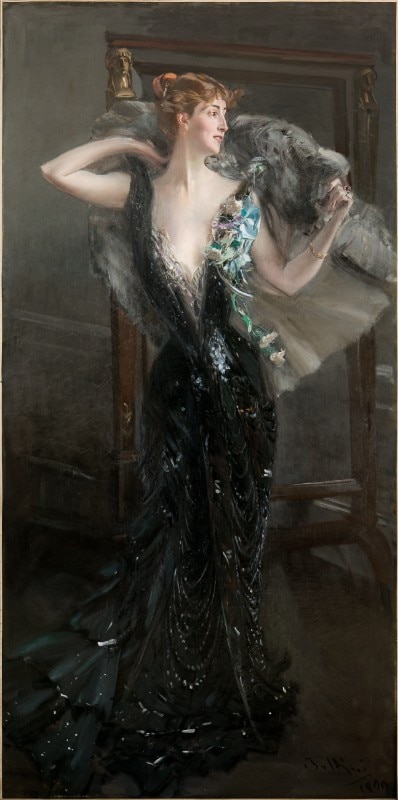
In the second room, the splendor and brilliance of white lead – or the bright white color that Boldini masters – triumphs. De Nittis supports and follows him, giving the color a different, almost decorative meaning.
Berthe Going for a Walk (1874), Berthe Standing in the Livingroom Reading the Dedication on a Fan (1878), Berthe again, a figure of the young and blonde woman, model, and lover of the Ferrarese master, later replaced by the dark and seductive Gabrielle de Rasty, Count Constantin de Rasty’s wife.
Countess Gabrielle de Rasty on a sofa (1878) is a work of extraordinary beauty, where Boldini somehow changes his signature. A black background, without details, without elements, surrounds the young woman. Everything focuses on her, on her beauty, on her sensuality. A dark jacket, a red skirt, all elements that draw attention only to beauty, to her being a woman, provocative and seductive.
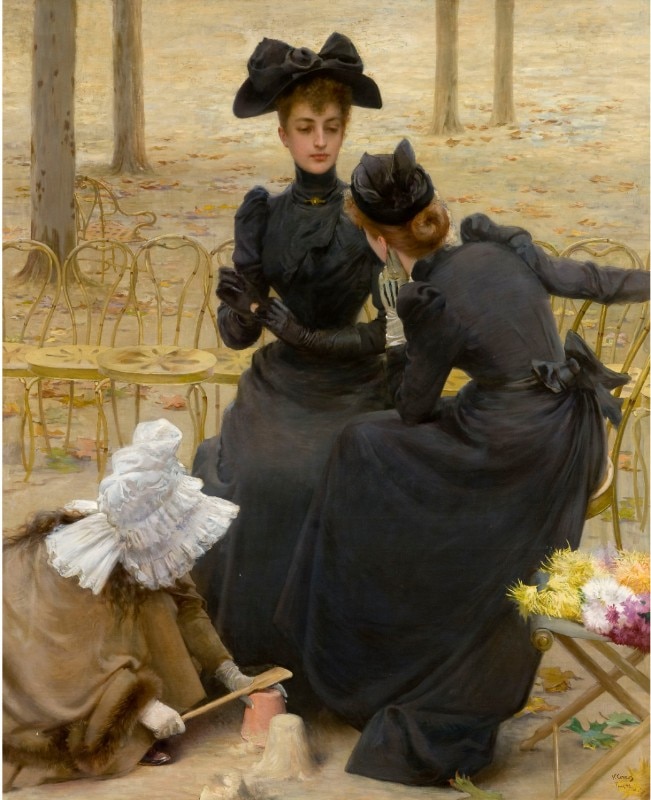
De Nittis presents himself during the exhibition as a true Parisian master, at once similar to Boldini and different. He recalls more Degas, Manet, and all those artists who felt more comfortable outside bourgeois salons and tried to reproduce their era by looking outside of them.
In the third room, the theme changes, the music changes, the scenario, the register, the rhythm.
Antonio Mancini is the protagonist. Forgotten by critics, the Neapolitan master inserts himself almost recklessly into the exhibition. The exhibition praises and reveals him. A melancholic joy given by his favorite subjects: the acrobats. A careful, sophisticated, meticulous, real painting, a poet, a master, an interpreter of a society far from that narrated in the previous rooms and those that follow.
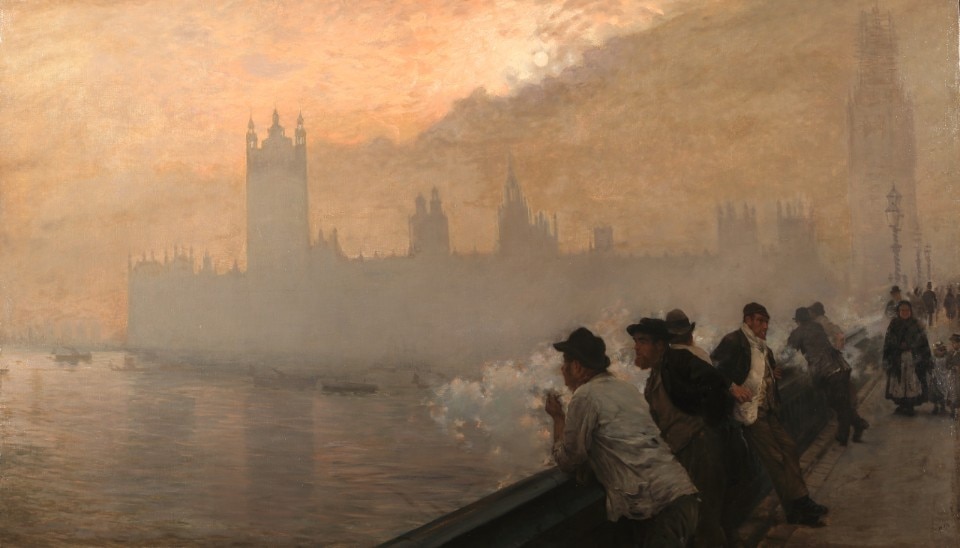
In the fourth room, the cities arrive, the two greatest artistic cities of the time: Paris and London. The works of Boldini and De Nittis are compared, marking the stylistic and sentimental differences between the two.
In a passage room, almost hidden, we could say more reserved, the fifth, the nudes arrive. Gentle pictorial exercises, light brushstrokes that outline the wonder of female bodies. Delight then explodes, concentrates, astonishes.
Zandomeneghi and Corcos with his Governesses at the Elysian Fields (1859) still dialogue with Boldini and De Nittis in the last rooms.
A well-conceived exhibition, with perfect captions that illuminate and explain to the visitors every thematic and pictorial transition. Ninety works that leave nothing to chance, perfectly arguing the life of the time.
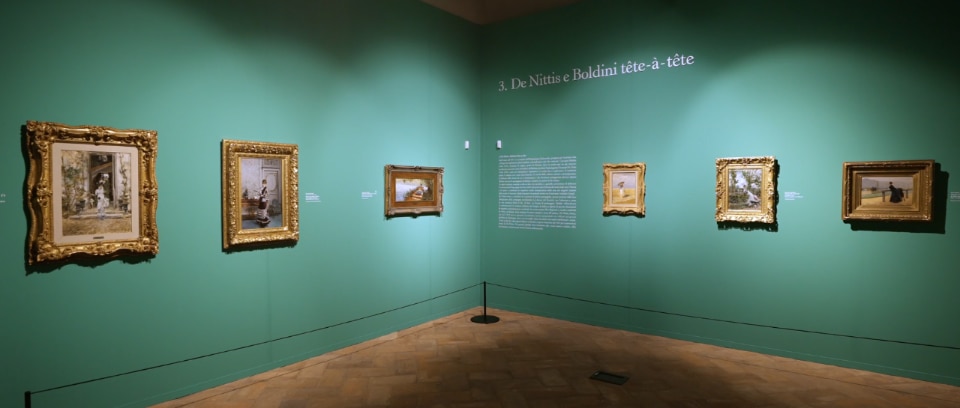
Zola wrote in 1860: ‘Paris offers, further, an advantage you can’t find elsewhere: the museums in which you can study the old masters from 11 to 4. This is how you must divide your time. From 6 to 11 you go to a studio to paint from a live model; you have lunch, then from 12 to 4 you copy, in the Louvre or the Luxembourg, whatever masterpiece you like. That will make up nine hours of work. I think that ought to be enough [...]. On the other hand, you can create some resources for yourself here. The studies done in the studios, especially the copies from the Louvre, sell very well; and even if you do them only for a month, you can round off the sum for small pleasures [...]’
Here is the 19th century, here is La Belle Époque.
Opening image: Giuseppe De Nittis, Walk with the dogs, 1874. Oil on canvas 31 x 42 cm
- Exhibition:
- Boldini, De Nittis et les italiens de Paris
- Location:
- Castello di Novara, Piazza Martiri della Libertà 3
- Dates:
- from November 4th, 2023 to April 7th, 2024
- Curated by:
- Elisabetta Chiodini


